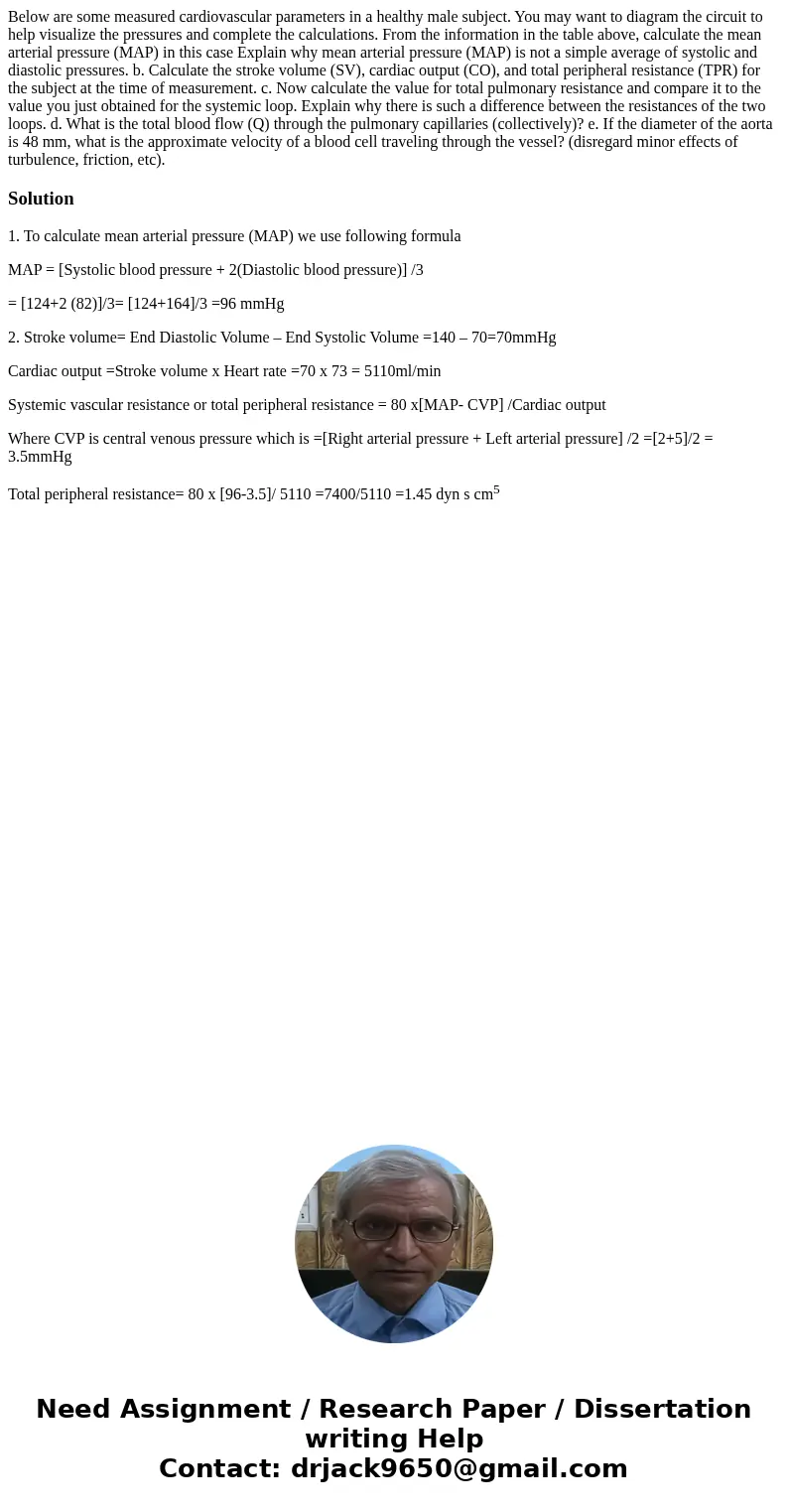Below are some measured cardiovascular parameters in a healt
Below are some measured cardiovascular parameters in a healthy male subject. You may want to diagram the circuit to help visualize the pressures and complete the calculations. From the information in the table above, calculate the mean arterial pressure (MAP) in this case Explain why mean arterial pressure (MAP) is not a simple average of systolic and diastolic pressures. b. Calculate the stroke volume (SV), cardiac output (CO), and total peripheral resistance (TPR) for the subject at the time of measurement. c. Now calculate the value for total pulmonary resistance and compare it to the value you just obtained for the systemic loop. Explain why there is such a difference between the resistances of the two loops. d. What is the total blood flow (Q) through the pulmonary capillaries (collectively)? e. If the diameter of the aorta is 48 mm, what is the approximate velocity of a blood cell traveling through the vessel? (disregard minor effects of turbulence, friction, etc).
Solution
1. To calculate mean arterial pressure (MAP) we use following formula
MAP = [Systolic blood pressure + 2(Diastolic blood pressure)] /3
= [124+2 (82)]/3= [124+164]/3 =96 mmHg
2. Stroke volume= End Diastolic Volume – End Systolic Volume =140 – 70=70mmHg
Cardiac output =Stroke volume x Heart rate =70 x 73 = 5110ml/min
Systemic vascular resistance or total peripheral resistance = 80 x[MAP- CVP] /Cardiac output
Where CVP is central venous pressure which is =[Right arterial pressure + Left arterial pressure] /2 =[2+5]/2 = 3.5mmHg
Total peripheral resistance= 80 x [96-3.5]/ 5110 =7400/5110 =1.45 dyn s cm5

 Homework Sourse
Homework Sourse